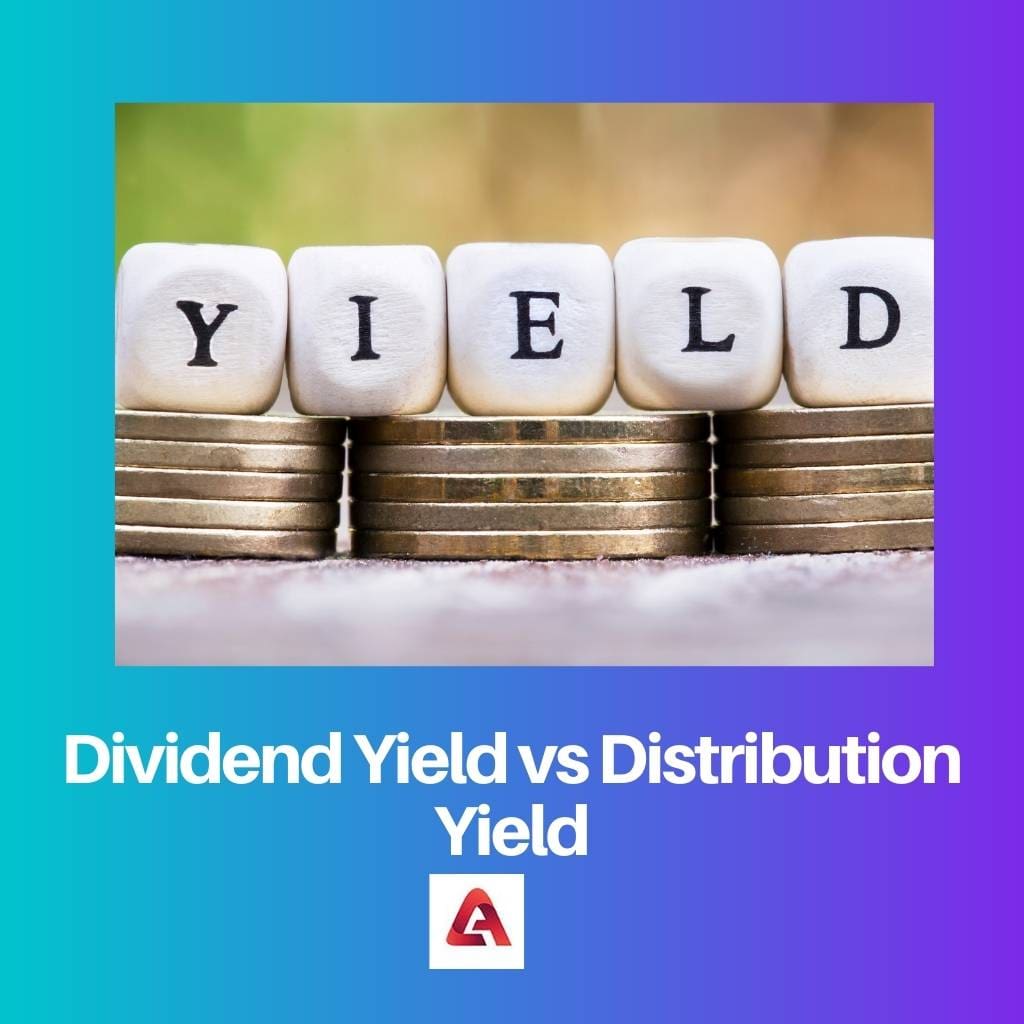As more and more people begin to dabble in their share of investing, it is imperative to distinguish ways to know more about the value of their investment. Dividend and distribution yield serve as insightful metrics for such a cash flow.
What differs is the period involved and the type of return. They are both considered valuable options for sustainable investment income growth.
Key Takeaways
- The dividend yield is the ratio of a company’s annual dividend payment to its stock price, expressed as a percentage.
- Distribution yield is the total income an investment generates, including dividends and interest, divided by the investment’s price, expressed as a percentage.
- The dividend yield is more commonly used for stocks, while the distribution yield is used for investment funds such as mutual funds and exchange-traded funds (ETFs).
Dividend Yield vs Distribution Yield
The difference between dividend yield and distribution yield is that they are expressed as ratios of different types of returns. The dividend yield is a ratio of dividends over a financial year to the company’s current share price. Distribution yield is expressed as a ratio of annual distribution to the fund’s value. Dividend and distribution yield is a percentage of a company’s market value.

The dividend yield is a financial ratio (dividend/price) that shows how much a company pays out in dividends each year relative to its current stock price. Before getting into what counts as a dividend yield, it is essential to note what a dividend is.
A dividend is a portion of an organization/company’s earnings distributed amongst its shareholders. This amount largely depends on internal decisions taken by the organization’s board of directors. They serve as a reward to a venture’s investors.
Your returns determine the distribution yield through an exchange-traded fund (ETF). As opposed to dividend yield, it is not calculated by aggregating the returns over a certain period but rather is determined by considering the past month’s return.
In this, the most recent distribution is taken into consideration. This distribution is then extrapolated for the annum (i.e., multiplied by 12). The resultant value is then divided by the Net Asset Value (NAV) of the said fund at the time of purchase. This is done with ETFs.
ETFs are funds to track a single commodity or a selection of commodities, sectors, and the like.
Comparison Table
| Parameters of Comparison | Dividend Yield | Distribution Yield |
|---|---|---|
| Metric of Comparison | Price per share | Net Asset Value (NAV) |
| Time Period | Usually 12 months, i.e., over a year | Usually, the most recent month (1 month) |
| Employed by | Companies/Organisations | Fund or a trust |
| Calculation | Dividend Yield = Aggregate of annual dividends per share/price per share | Distribution Yield = (30-day distribution amount x 12) / end of month NAV |
| Paying Out | It is paid through dividend checks or additional stock, every quarter. | They paid either electronically or by check. Usually, dividends are paid out quarterly; capital gains are paid out annually. |
What is Dividend Yield?
Dividend yield allows for value realization through stock price appreciation and company payouts. Since dividend yield is determined based on annual dividends, they are considered less risky than other investment forms.
Regardless, it is important not to base one’s investment plans solely on a company’s dividends.
For instance, if a company pays 5 rupees of dividends over 12 months and has a current share price of 100 rupees, then the resulting dividend yield would be 5%. In addition, the payment of dividends is not considered a mandatory practice for any organisation in the investment world.
Therefore, the organization in question can discontinue paying dividends. Hence, it is essential as an investor not to put one’s eggs in the same basket as one with the highest dividend payout alone.

What is Distribution Yield?
In the case of distribution yield, the most recent distribution is considered. This may prove risky at times since the value banks on one month’s (the most recent) distributions are annualized.
This leaves room for projections that can be skewed as minute financial give and take is not captured. This is attributed to the period taken into account in the calculation. It is possible that special dividends, when not adequately accounted for, may reflect a higher distribution yield.
Although distribution yield looks at the most recent distribution, a company can look at the past 12 months’ distribution at their discretion. They are employed while gauging the cash flow through an investment vehicle instead of an organization.
Suppose a fund is priced at 100 rupees per share, and 50 paise is the outlined interest payment collected monthly. The interest is then multiplied by 12 for an annualized 6 rupees. Dividing 6 rupees by 100 rupees will give us a distribution yield of 6%.

Main Differences Between Dividend Yield and Distribution Yield
- Dividend-paying stocks allow investors to profit through stock price value appreciation and payouts made by the company. However, distribution yield is based primarily on cash flow.
- A dividend yield is a valuable tool for clear comparison indicators between two potential companies; however, distribution yield helps measure a company’s past performance against its current.
- The dividend yield reflects the value of dividends alone, whereas the distribution yield includes capital gains/losses.
- The dividend yield is preferred by companies/organizations, whereas distribution yield is employed as a metric for an investment vehicle like ETF.
- The return of capital, i.e., capital gains in a distribution yield calculation, is not taxed as opposed to a dividend yield that is entirely taxed.




